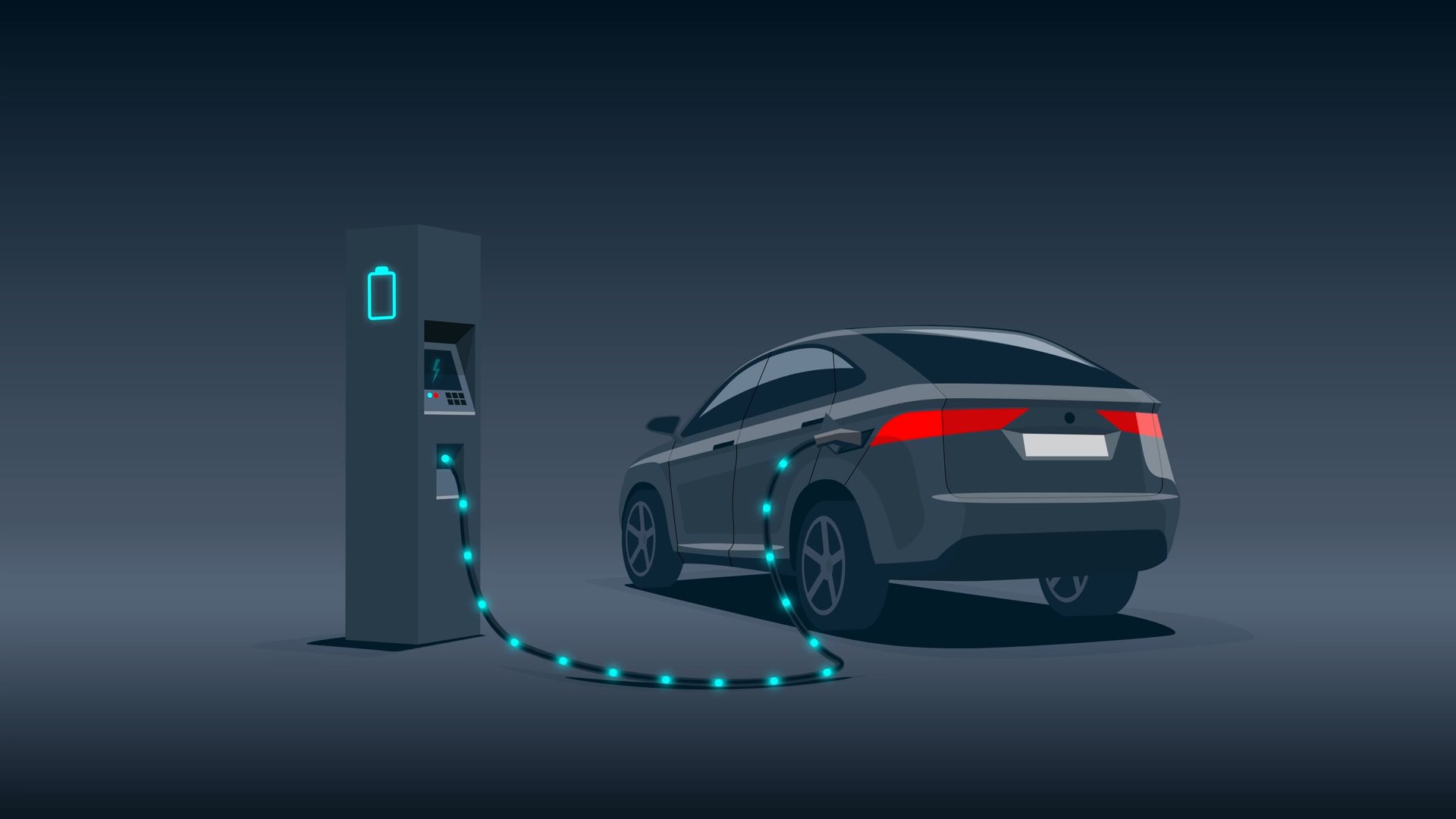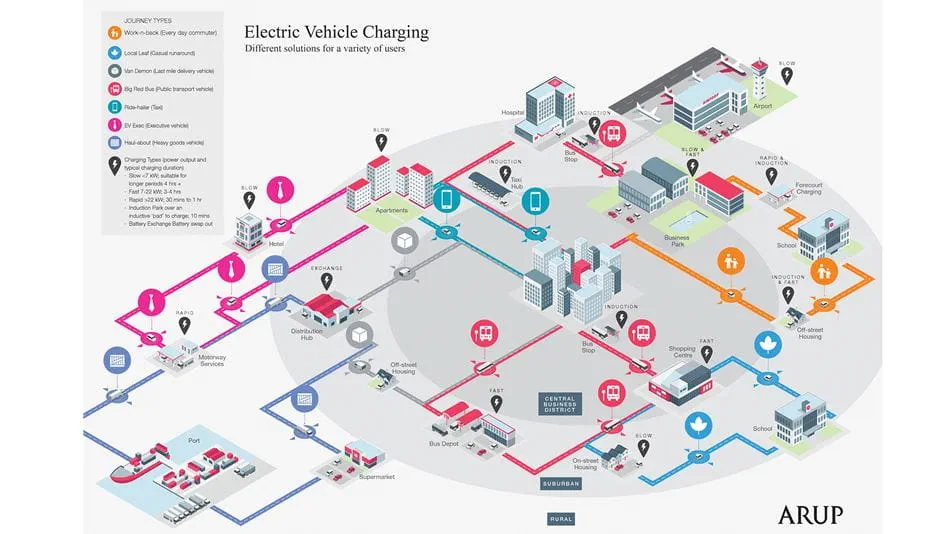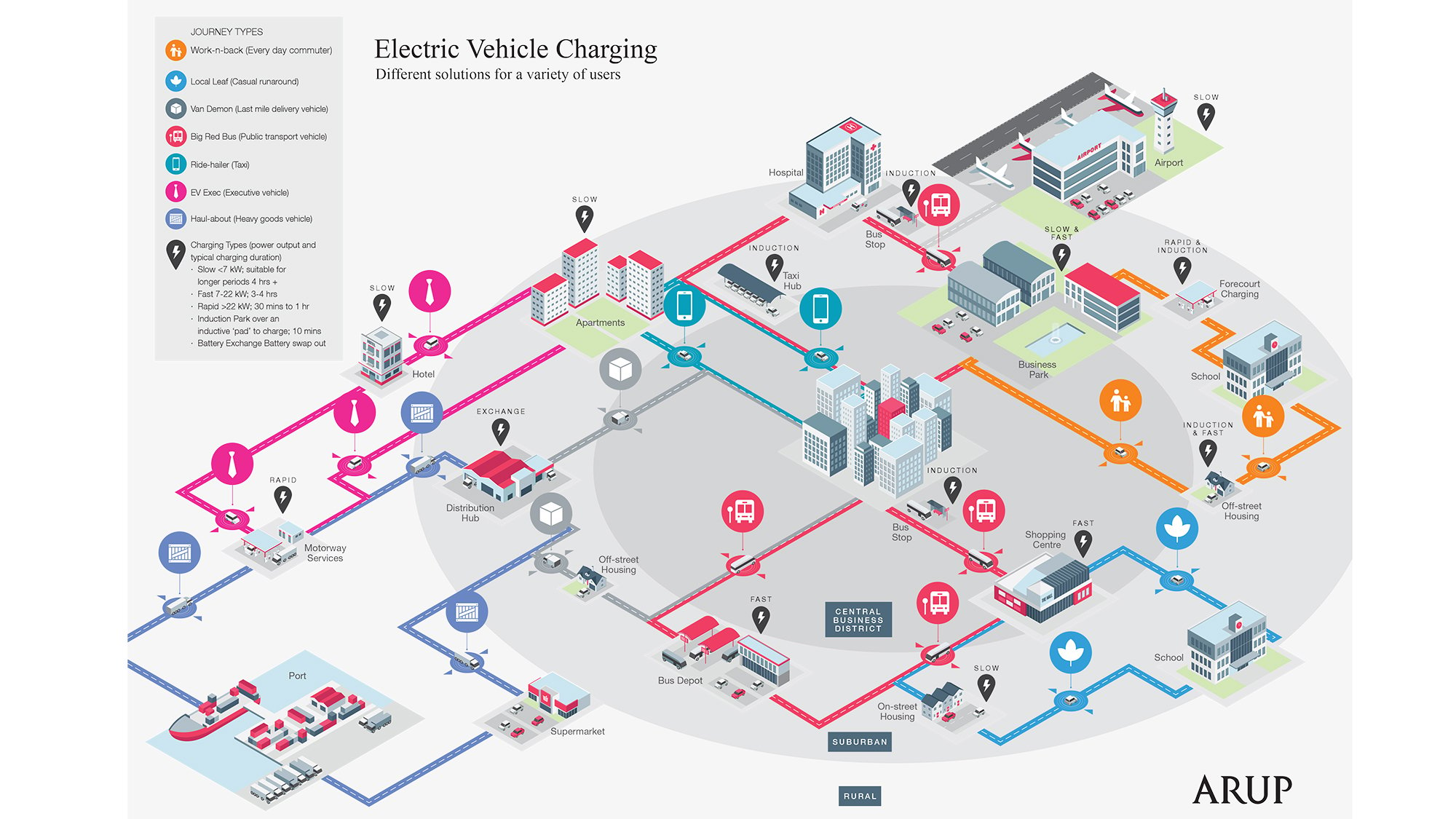From the new LEVC electric black cab to the battery-powered buses now purring through many cities’ streets, the era of the electric vehicle (EV) has already begun. But despite growing numbers, development of the charging infrastructure hasn’t yet taken off. How should interested investors approach the EV charging grid opportunity?
Who will use the grid?
One reason investors have held off to date is uncertainty – around policy direction but also, and more importantly, around timing. While it’s pretty clear that EVs will replace petrol and diesel vehicles soon, investing in the grid now raises many questions. Which users’ demand should you try to meet? Privately owned electric cars, commercial taxi fleets or self-driving electric buses? No-one wants to spend heavily developing ‘stranded assets’ that there’s little demand for.
This is why investors must work in partnership – with local authorities, energy networks, charging companies, digital solution providers – to understand customer’s needs and develop a business model attuned to this early phase of the EV revolution, responding to cities’ wider social goals.
“Petrol and diesel vehicles now seem like the end of an era, and EVs are fast approaching the moment where they redefine the market. For investors in the charging grid, it’s a great time to establish your name, presence and supply chain. ”
Filippo Gaddo Former Director
Build infrastructure around existing demand
Developing an understanding of where the demand is coming from and how consumers will use EVs will be critical in sizing, scaling and shaping the right infrastructure.
Outside the home charging model, we see two types of demand drivers which will lead to distinct market opportunities to capture customers and therefore contribute to de-risk the investment:
Business model 1: ‘the destination user’
Airports, stations, car parks, business parks and major office spaces are great places to site charging stations and infrastructure. These locations provide a level of guaranteed demand and are naturally environments where users will leave vehicles long enough to fully recharge on fast charging points, as well as providing a fleet of stand-by batteries to be used for balancing services, meaning higher revenue generation possibilities.
Tariff structure in this model for example could favour a fixed charge that covers the land rental use (parking) and the rental of the infrastructure (the charging point). For investors, forming partnerships now with key players such as transport authorities, utilities and other parts of the supply chain, will unlock these opportunities.
Business model 2: ‘the hub user’
Cities are full of businesses that rely on large fleets of specialist vehicles, from taxis, to buses, to emergency services vehicles, to delivery vans. For investors these represent potential attractive propositions as they offer the opportunity to unlock another captive and concentrated market, via the deployment of ‘charging hubs’ where fleet owners can re-charge vehicles at rapid or super-rapid charging points.
Eventually we would expect competitive forces to drive all consumers to the most commercially attractive charging location, but in the early stages commercial fleet hubs provide a degree of certainty to investors and will support the development of a supply chain. Tariffs could be tailored to favour a discount on the retail power price, in return for a minimum level of guaranteed demand.
As success depends on managing the combination of access to land, access to people and access to power infrastructure, forming a collaborative relationship with public sector data providers and utilities who share a stake in the charging grid’s development, will be essential.
How this will shape our cities
Our electric vehicle charging infographic shows how different business models can meet users' needs, by giving varied and accessible charging solutions.
The data reveals the drivers
The EV revolution is in fact taking place in parallel with a new generation of data-driven tools that reveal much about our travelling habits. This means investors and future owners of the charging infrastructure will be able to refine their market proposition using data-driven insights based on how companies structure their logistics and supply chains, and how real people move around their cities, route their commutes and spend their leisure time.
A chance to define the market
A fledgling and developing market provides a great opportunity to set market standards and consumer expectations, by working with cities, government and regulators – for example, in creating new innovative business and tariff solutions. But to achieve this, it will be advantageous to develop partnerships and relationships with organisations that can design, deliver and manage what is essentially an entirely new public mobility proposition.
Read below examples of successful collaborations in the emerging charging market:
Discover more about the future of energy and cities
-
Project
Infrastructure Victoria: advice on automated and zero emissions vehicles infrastructure
Infrastructure Victoria commissioned Arup to conduct analysis and research on the potential transport engineering impacts, risks and opportunities presented by automated and zero emissions vehicles.
-
Expertise
Urban energy
Expanding cities is putting added pressure on energy infrastructure and capacity. We work with city leaders and energy operators to rethink generation and distribution whilst helping both public and private sector organisations to take control of their energy needs.
 ;
;



